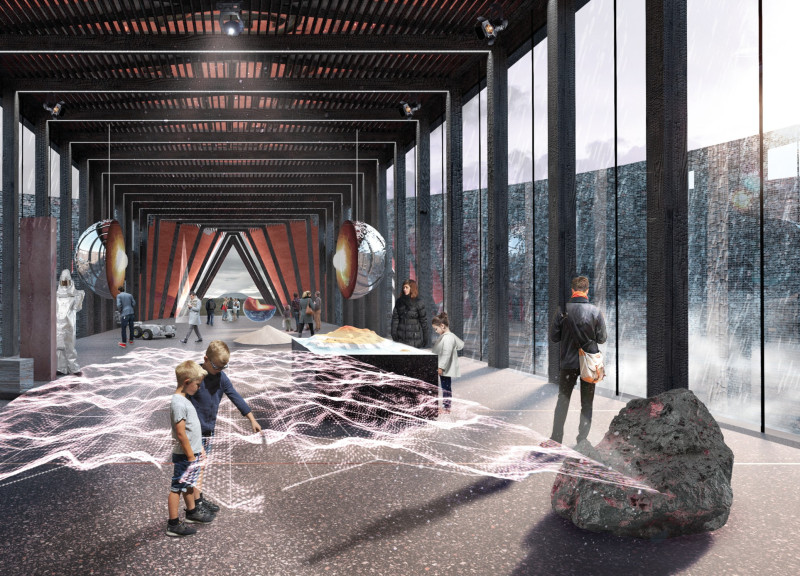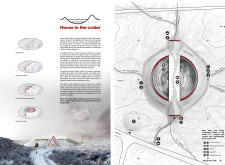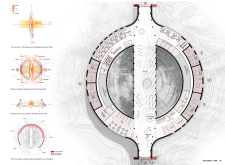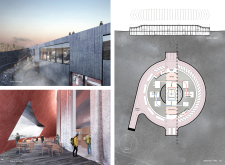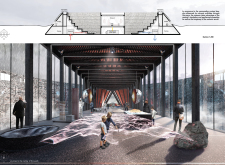5 key facts about this project
House in the Crater is located in Iceland’s unique volcanic landscape. The design connects cultural heritage with sustainable practices, serving both as a museum and a center for interactive learning. It draws inspiration from traditional turf houses, establishing a strong bond with the geological context. The concept involves reshaping the ground to create spaces that provide immersive experiences for visitors.
Geothermal Integration
A key feature is the geothermal power plant, which sits beneath the museum. This facility supplies electricity and heat, illustrating the commitment to sustainability. The steam produced flows through the crater, creating an immersive atmosphere within a smaller replica of Hverfjall crater. This design encourages visitors to engage with the geothermal characteristics of the landscape.
Visitor Experience
The layout of the building includes a pathway that directs visitors towards the volcano, promoting interaction between the structure and its natural surroundings. This approach redefines a typical hiking experience, turning it into a learning journey. As people walk the path, they gain insight into Iceland’s geology and natural history.
Hiking Shelters
Alongside the museum, hiking shelters have been added to enhance the overall experience within the Icelandic terrain. These structures are meant to blend with the landscape, inviting exploration and outdoor activities. By complementing the main building, they contribute to a unified visitor experience that fosters both cultural understanding and appreciation for nature.
The alignment with traditional architectural practices suggests a potential use of earth-based and natural materials. This connection enhances the conversation between the built environment and the landscape. Design details allow natural light and geothermal features to enrich the visitor experience, creating an inviting atmosphere.


